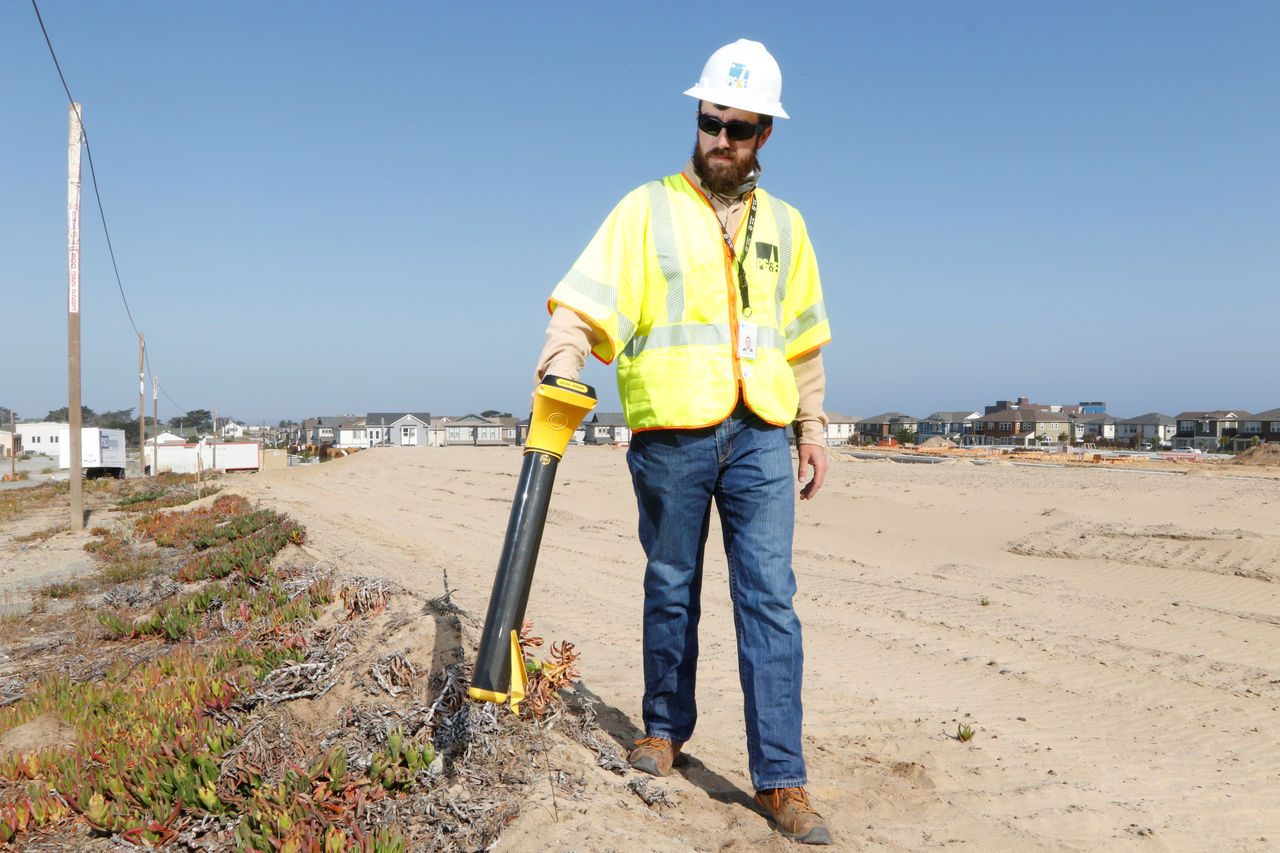Keeping the area above the pipeline safe for our communities
Our most important responsibility is the safety of our customers. That's why we work with our communities to keep the areas near our natural gas transmission pipelines safe and clear. We regularly inspect the area above and around the pipeline for new trees, brush or structures that could pose a safety concern. These items can block access in an emergency or for critical maintenance work. Tree roots can also damage the pipe.

Trees, brush and structures should be at least 14 feet from the pipeline for safety. We will work closely with property owners to remove or relocate any trees, brush and structures that are too close to the pipeline and therefore are a safety concern. Keeping the area above the pipeline clear helps us provide safe and reliable gas for our communities for years to come.
Guidance for pipeline safety
We follow recommendations from the United States Department of Transportation's Pipeline and Hazardous Materials Safety Administration (PHMSA) and the Pipelines and Informed Planning Alliance (PIPA), as well as the Public Awareness for Pipeline Operator's American Petroleum Institute.


Recommendations include:
- Ensuring vegetation won't prevent access to the pipeline for inspections and/or maintenance of the pipeline.
- Avoiding planting vegetation near the pipeline if roots might reach the pipeline and impact its coating.
Working together to keep the pipeline safe
Together, we can help keep our communities and the gas pipelines safe. You can help by:
- Calling 811 two working days before starting a digging or landscaping project to have the underground utilities marked. This service is free.
- Planting the right tree in the right place, ensuring all trees are planted at a safe distance from the pipeline.
- Submitting plans for any new buildings or major landscaping projects to PGEPlanReview@pge.com. This helps protect our facilities and keep our community safe.
- Monitoring any suspicious activity near pipelines. Call 1-800-743-5000 to file a report.
Below are general guidelines for planting safely near a gas pipeline. More information on safe landscaping is available in our Guide to Safe Planting (PDF).

For illustrative purposes only. Multiple factors are reviewed when considering removal of vegetation near gas pipelines including trunk size and soil condition, among others.
Additional resources
More information about our safety work can be found in the resources below. If you have any questions, please contact 1-800-743-5000.
Trees, brush and structures can block access to a pipeline during an emergency or critical maintenance work. If the items are too close, they can also potentially damage the pipeline. If you are concerned that a structure or tree is located too close to a pipeline, please call PG&E at 1-800-743-5000.
We regularly inspect the area above and around the gas pipeline throughout our service area for items, including vegetation and structures, that may pose a safety concern. We may also inspect our underground and overhead facilities throughout the year to ensure our system is operating safely.
Pipeline access cannot be blocked for the same reason that cars cannot park in front of a fire hydrant. When fire trucks need to access fire hydrants, they need immediate and unblocked access. Similarly, items located near the underground pipeline can delay PG&E's access and slow response times for urgent, safety-driven work. Every second counts in an emergency.
Rerouting the pipeline is disruptive to the community and environment. It is also very expensive and can take several years to complete at the expense of the ratepayer. Together, we can work to keep the area above and around the pipeline clear of items that can pose a safety concern. This will ensure safe and reliable service for years to come.
Learn more about the best practices we follow by reviewing these resources:
- Pipeline and Hazardous Materials Safety Administration (PHMSA) regulations
- Pipeline and Informed Planning Alliance's (PIPA) Report of Recommended Practices
- PIPA's recommended practices for development around transmission pipelines
- American Petroleum Institute's (API) Public Awareness Guidelines
- Pipeline Safety Trust's Landowner's Guide to Pipeliness
Related information
Safety
At PG&E, nothing is more important than safety.
Community Wildfire Safety Program (CWSP)
Find out how we are making our system safer and more reliable.
Outage preparedness and support
Stay prepared for power outages and get support.
